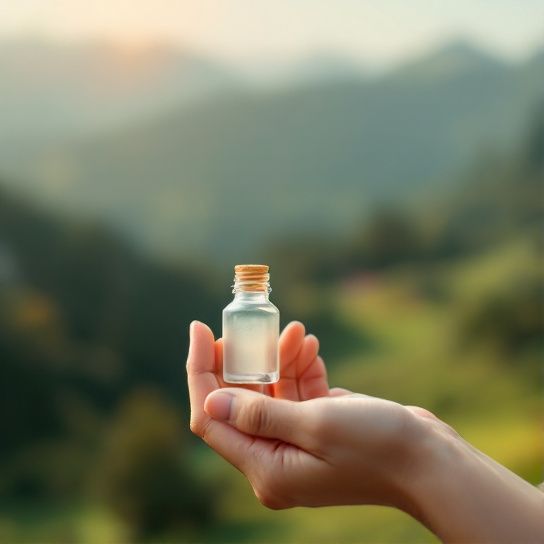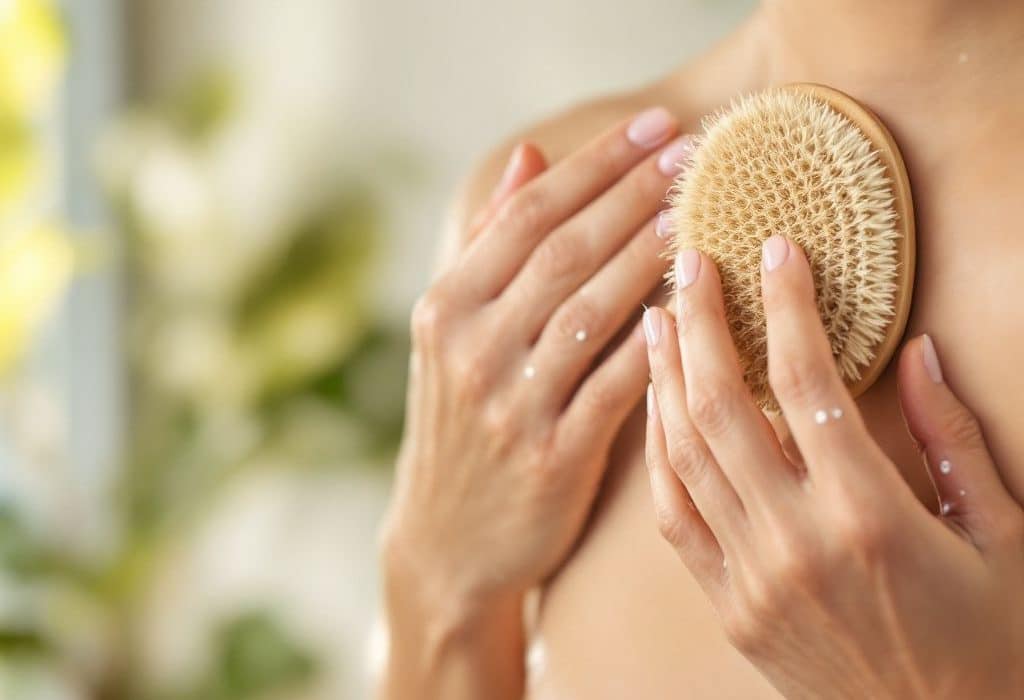Let’s face it, we’ve all been there—standing in front of the bathroom mirror, staring at our reflection and realizing our skincare routine could use a bit of an upgrade. But who knew that something as simple as a brush could make such a big difference? Enter dry brushing—a skincare technique that’s making waves in the natural skincare world.
**Why Dry Brushing?**
Honestly, when someone first suggested I try dry brushing, my immediate reaction was, “Isn’t that just, you know, brushing without water?” Exactly! And here’s why it might just be the unsung hero of your skincare ritual. Dry brushing is all about exfoliating the skin, boosting circulation, and oh yeah, giving the skin that glow you see in those pesky social media posts.
What is Dry Brushing, Anyway?
So, here’s your crash course on dry brushing. It’s an ancient exfoliation method involving a dry, stiff-bristled brush to massage your skin, typically before you shower. It’s simple, soothing once you get the hang of it, and—get this—it’s eco-friendly; it’s all about using natural ingredients, right?
Natural Skincare Meets Dry Brushing
If you’re as obsessed as I am with natural skincare, you’re going to love how dry brushing fits seamlessly into a holistic approach to glowing skin. It complements any routine focused on natural products by prepping the skin to absorb all those natural serums and moisturizers better.
The Dry Brushing Technique: Let’s Break It Down
Okay, so let’s dive into technique. Because, trust me, it’s all in the way you do it.

Step 1: Choosing the Right Brush
Begin with your weapon of choice—a good quality dry brush. Ideally, you want a brush with natural bristles, like boar or cactus bristles. If you’re vegan, seek out alternatives like sisal. Seriously, choosing the right texture sets the stage for everything else. It shouldn’t feel like torture but a gentle exfoliation. If you find yourself wincing, you might need to ease up on the pressure or find a softer brush.
Step 2: The Best Time to Brush
Get your brushing done just before you hop in the shower. You’ll be brushing away all those dead skin cells, so rinsing off right afterward leaves you feeling fresh. Bonus: your pores will open up in the shower, synergizing beautifully with the natural oils you’ll be applying post-rinse.
Step 3: Let’s Talk Technique
Start from your feet, moving your way upwards in long, gentle strokes toward your heart. This direction stimulates circulation and aids the lymphatic flow. When brushing, aim for 3-4 strokes per area, overlapping to ensure you cover all ground. Around sensitive areas, like the armpits or chest, adjust the pressure accordingly. Gentle sweep motions, folks—that’s the name of the game.
Step 4: Save the Face for Later
Hold off on using that body brush for your face. Different skin, different technique! Instead, opt for a softer brush designed explicitly for the delicate skin on your face. The motion remains the same, but here—softness is key.
Benefits of Dry Brushing: The Perks You Didn’t Know About
Why should you, of all skincare enthusiasts, give dry brushing a whirl? Here’s the dish:
- Exfoliation Central: Removes dry patches and softens rough skin, leaving you looking less like a winter desert and more like a spring meadow.
- Boosts Circulation: That massage sensation isn’t just great for feeling good—it stimulates the blood flow under your skin’s surface. This provides oxygen and nutrients for that glow.
- Goodbye, Cellulite (Sort of): Not a cure, but regular brushing might help diminish the appearance of cellulite by increasing blood flow and fluffing up the fat cells. Hey, it’s something!
- Lymphatic System Boost: Believe it or not, your body’s got its own drainage system, and dry brushing might just help clear out those toxins faster.
- Unplug Pores: Especially helpful if you’re in the phase where natural oils seem like a good idea for everything—cleaning your skin for better absorption is vital.
Frequently Asked Dry Brushing Questions

Just as when you discover any new shiny treatment, there are questions—those nagging little uncertainties that make you hesitate. Let’s settle some of those.
Does It Hurt?
Not when done correctly. You might experience mild redness, just like what happens with a gentle scrub. Feel the adjustment and listen to your skin—no need to manhandle it.
How Often Should I Dry Brush?
Every couple of days should do just fine, or even daily if your skin can handle it. Remember, everyone’s skin is different, so adjust accordingly. There’s no merit in pursuing something too aggressively care.
Can I Incorporate Other Techniques?
Absolutely. Combine it with other natural routines, like oil cleansing or clay masks, to create a holistic, multi-stepped self-care session.

Common Dry Brushing Mistakes and How to Avoid Them
It sounds both simple and intuitive, but confessions of rookie mistakes tell a different story. Here’re the pitfalls to outsider.*
Skipping Moisturizer After Brushing
You’ll want to nourish your skin with a moisturizing oil or lotion post-dry brushing. Choose natural, hydrating options like coconut or sweet almond oil to lock in moisture and provide a barrier.
Going Overboard with Pressure
If you’re new to dry brushing, you might feel the temptation to go harder for better results. Resist that urge. It’s a sad fallacy that needs correction before it becomes habit. Apply gentle to moderate pressure instead.
Not Cleaning Your Brush
Your dry brush is cleaning you—the least you can do is reciprocate. Make it a routine to keep it clean by occasionally washing with a mild soap and letting it air dry, bristles facing down.
Conclusion: Embrace the Simplicity
There it is. Dry brushing demystified! In the world of natural skincare, leveraging dry brushing feels almost like finding a cheat code—a time-tested, easy-to-implement procedure that lets you nurture your skin without injecting an avalanche of complex formulas and chemicals.
And once you’ve figured out your rhythm, you’ll know this ritual isn’t just another fleeting trend. It’s become one of those grounding practices—one that makes your skin sing (if skin could sing, you know).
Give it a whirl and see for yourself. Once you feel the tingling liveliness after a session, and your skin begins to glow with radiant, effortless vitality, the good ol’ traditional brush might just become your new favorite wellness accessory. Trust me on this one.
Frequently Asked Questions
What are the benefits of using natural skincare products?
Natural skincare products offer several benefits, including being gentler on the skin, reducing the risk of irritation and dryness, and providing nourishment through nutrient-rich and antioxidant-rich ingredients. They are also free from harsh chemicals, artificial colors, and fragrances, making them suitable for sensitive skin. Additionally, natural skincare products can help prevent premature aging and are more environmentally friendly[1][3][5).
How do natural skincare products differ from conventional skincare products?
Natural skincare products are primarily composed of ingredients derived from plants, animals, or minerals, with minimal or no chemical or synthetic substances. In contrast, conventional skincare products often contain harsh chemicals, preservatives, and synthetic ingredients that can strip the skin of its natural oils and cause irritation. Natural products adhere to stricter standards, such as the absence of pesticides and fertilizers, and are more aligned with organic food standards[1][3][5).
What natural ingredients are commonly used in natural skincare products?
Common natural ingredients used in skincare include coconut oil, shea butter, aloe vera, green tea, chamomile, argan oil, and honey. These ingredients are rich in vitamins, antioxidants, and essential fatty acids that help moisturize, soothe, and protect the skin. For example, aloe vera is moisturizing and soothing, while green tea helps reduce oxidative stress and cellular aging[1][3][5).
Are natural skincare products suitable for all skin types?
Yes, natural skincare products are suitable for all skin types, including sensitive skin. These products are generally gentler and less likely to cause irritation compared to conventional products. They come in a variety of forms, such as creams, serums, and masks, allowing users to find products tailored to their specific skin concerns and needs[1][3][5).
References- Learn Canyon. (2023). The Benefits Of Using Natural Products.
- RFS Adermatology. (2023). The Pros And Cons Of Using Natural Skin Care Products.
- Beau Domaine. (2023). Why Use Natural Skin Care?.


